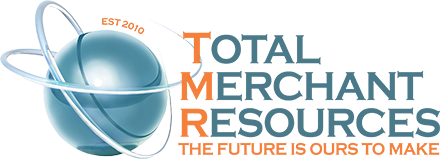
Running a business often requires having the right equipment to stay competitive and efficient. Yet, purchasing this equipment upfront can be costly, tying up much-needed capital. Equipment leasing offers a smart alternative for businesses looking to access the tools they need without the heavy financial burden of buying.
Leasing allows businesses to use equipment for a set period with manageable monthly payments. This approach is particularly beneficial for businesses with limited capital or those wanting to keep up with rapidly changing technology. Leasing provides the flexibility to upgrade equipment as needed, ensuring operations always run smoothly with the most current tools.
Understanding how equipment leasing works and its advantages can significantly impact your business’s bottom line. It’s about making strategic decisions that align resources with business goals, optimizing how you use your funds while keeping operations efficient. Whether you need to expand capabilities or replace outdated machinery, equipment leasing could be the key to unlocking your business’s full potential.
Understanding Equipment Leasing Basics
Equipment leasing is a practical option for businesses that need new machines or tools but want to preserve capital for other operational costs. Leasing allows a company to use equipment for a specific period without purchasing it outright. You make regular payments to a leasing company, which owns the equipment while offering you the chance to use it as needed.
Leasing differs from buying in terms of ownership and financial commitment. When purchasing, you pay the full cost upfront or through financing arrangements and own the equipment once payments are complete. In contrast, leasing involves paying to use the equipment without gaining ownership, allowing the expense to be spread over time. This can be beneficial for businesses that regularly upgrade equipment to stay current with technological advances.
For companies with limited capital, leasing offers several advantages. It reduces the initial cash outlay, preserving funds for other needs like payroll or marketing. Leasing also provides flexibility, enabling businesses to adapt quickly to changes without being locked into outdated technology. By opting for this approach, businesses can access high-quality equipment that might otherwise be unaffordable through direct purchase, thus supporting their operational efficiency and competitive stance.
Identifying Equipment Needs for Operational Improvement
Improving operations starts with understanding the exact equipment your business needs. Begin by assessing your current operations and pinpointing where new or upgraded equipment could streamline processes. This involves consulting with team members who use the equipment daily, identifying any bottlenecks or inefficiencies, and discussing potential improvements.
Once you’ve identified areas that need enhancement, consider the type and level of technology required. Advanced equipment can boost productivity and ensure tasks are completed accurately and efficiently. However, technology should match your business size and industry requirements, ensuring it’s neither too advanced nor too basic for your needs.
Aligning new equipment with your business objectives is crucial. Think about how the equipment helps achieve broader goals such as faster production, improved product quality, or lower operational costs. Make a list of equipment priorities based on these objectives. This ensures that investments in leasing are strategic and contribute effectively to driving growth and success. Proper planning helps make informed decisions that place your business in a strong position to benefit from operational enhancements.
Exploring Cost Benefits of Equipment Leasing
Leasing equipment offers significant financial benefits that make it an attractive option for many businesses. One of the primary advantages is the lower upfront costs compared to purchasing. This makes it easier for businesses to acquire the necessary tools without a large initial investment, preserving capital for other critical expenses.
Another key benefit of leasing is its positive impact on budgeting and cash flow management. Regular lease payments can be planned and predicted, aiding in more accurate financial forecasting. This stability helps businesses maintain smoother cash flow and reduces the risk of financial strain during tough economic times.
Tax advantages play a crucial role as well. Lease payments are often considered a business expense, allowing the possibility of deductions that can lower taxable income. Over the long term, leasing can also provide cost savings. While outright purchases might appear cheaper initially, the hidden costs of ownership, such as maintenance and obsolescence, can add up. Leasing often includes maintenance and upgrade options, reducing long-term burdens and ensuring access to the latest equipment without additional costs.
Choosing the Right Equipment Leasing Partner
Selecting a suitable equipment leasing partner is vital for maximizing the benefits of leasing. Start by considering their reputation. A reliable partner with a track record of satisfied clients is more likely to provide quality service and support. Also, look for flexibility in their leasing options to accommodate changing business needs.
Contract terms should be thoroughly evaluated. Clear and fair terms are crucial to avoid unexpected costs or complications. Additionally, exceptional customer service impacts the overall leasing experience. A partner committed to understanding and addressing your concerns ensures smoother operations and fewer disruptions.
Industry knowledge is another important factor. Partners familiar with your sector better understand your specific needs and provide arrangements that align with industry trends. Finding a provider who understands these dynamics ensures your equipment strategy supports and enhances your business objectives effectively.
Conclusion
Equipment leasing presents a smart strategy for businesses intent on leveraging the latest technology without heavy financial loads. By understanding the cost benefits and selecting the right leasing partner, companies can access high-quality equipment and preserve resources for essential growth and operational activities. A thoughtful approach to leasing enables businesses to improve efficiency and maintain flexibility, supporting continued success.
Partnering with Total Merchant Resources offers businesses access to tailored leasing solutions designed with your needs in mind. Explore how our expertise ensures you get the most from your equipment investments, helping your business thrive in a competitive landscape. Visit our website to learn how our merchant loan services can contribute to your success.



